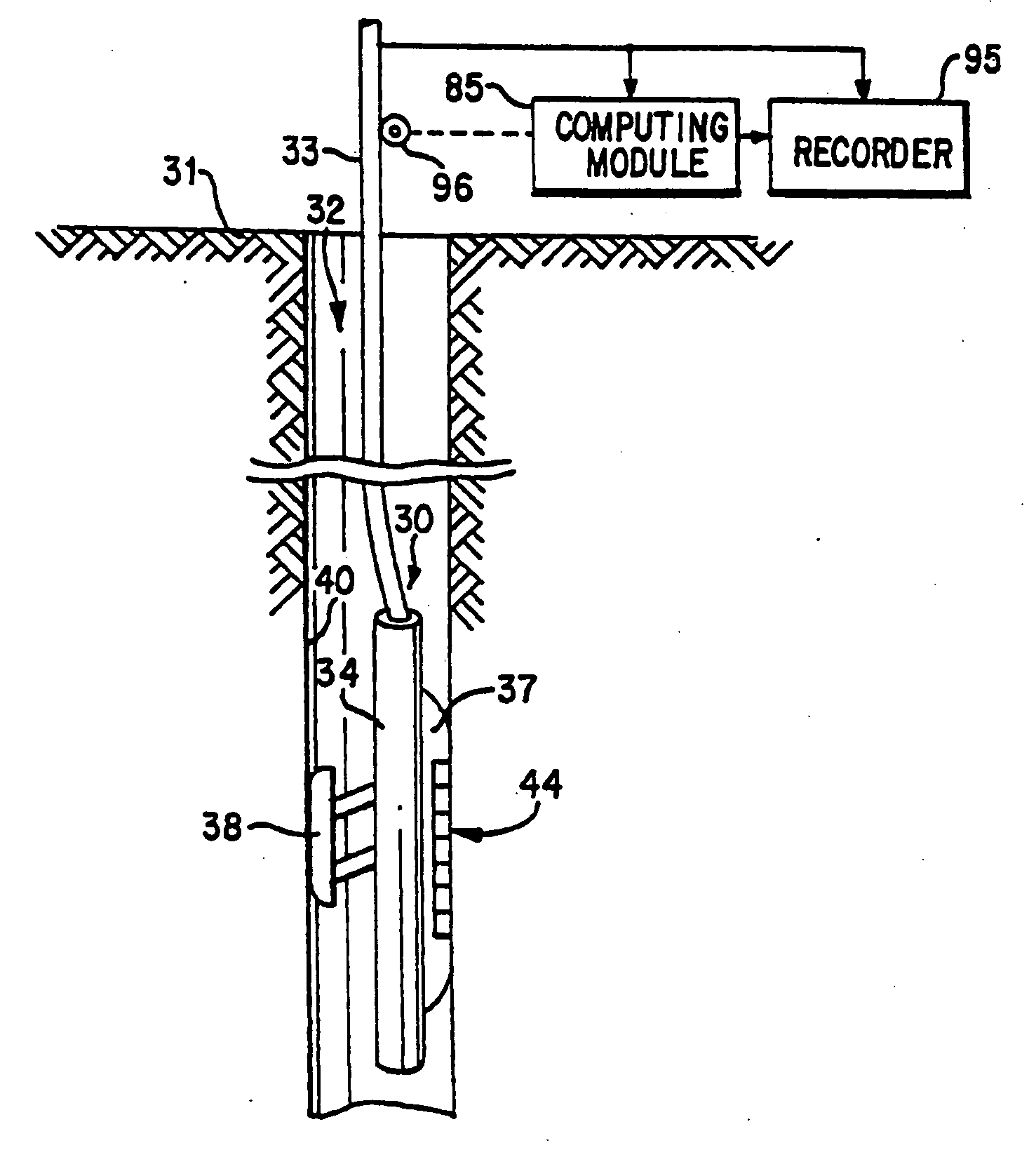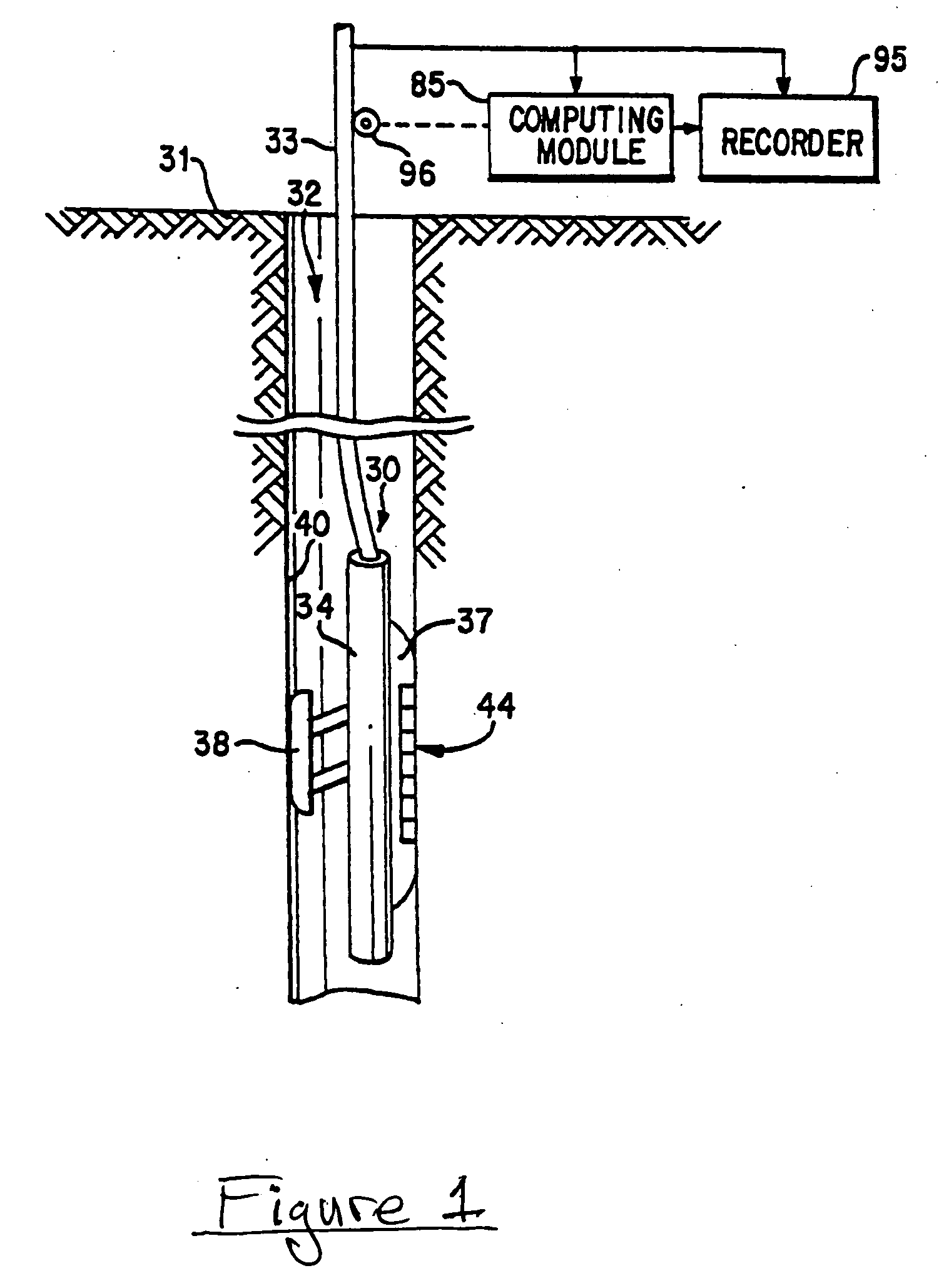Technique for determining properties of earth formations using dielectric permittivity measurements
a technology of permittivity measurement and earth formation, applied in the field of well logging, can solve the problems of inaccurate water saturation evaluation, unreliable conventional resistivity interpretation method, and difficulty in accurately predicting these values
- Summary
- Abstract
- Description
- Claims
- Application Information
AI Technical Summary
Benefits of technology
Problems solved by technology
Method used
Image
Examples
Embodiment Construction
[0036] Referring to FIG. 1, there is shown an apparatus 30, for investigating subsurface formations 31 traversed by a borehole 32, which can be used in practicing embodiments of the invention. The borehole 32 is typically filled with a drilling fluid or mud which contains finely divided solids in suspension. Generally, the fluid pressure in the formations traversed by the borehole is less than the hydrostatic pressure of the column of mud in the borehole, so that the mud and mud filtrate flow somewhat into the formations. As is well known, the formations tend to screen the small particles suspended in the mud so that a mudcake 40 can form on the walls of the borehole.
[0037] The investigating apparatus or logging device 30 is suspended in the borehole 32 on an armored cable 33, the length of which substantially determines the relative depth of the device 30. (The invention can also have application to measurement while drilling or measurement while tripping.) The cable length is con...
PUM
 Login to View More
Login to View More Abstract
Description
Claims
Application Information
 Login to View More
Login to View More - R&D
- Intellectual Property
- Life Sciences
- Materials
- Tech Scout
- Unparalleled Data Quality
- Higher Quality Content
- 60% Fewer Hallucinations
Browse by: Latest US Patents, China's latest patents, Technical Efficacy Thesaurus, Application Domain, Technology Topic, Popular Technical Reports.
© 2025 PatSnap. All rights reserved.Legal|Privacy policy|Modern Slavery Act Transparency Statement|Sitemap|About US| Contact US: help@patsnap.com



